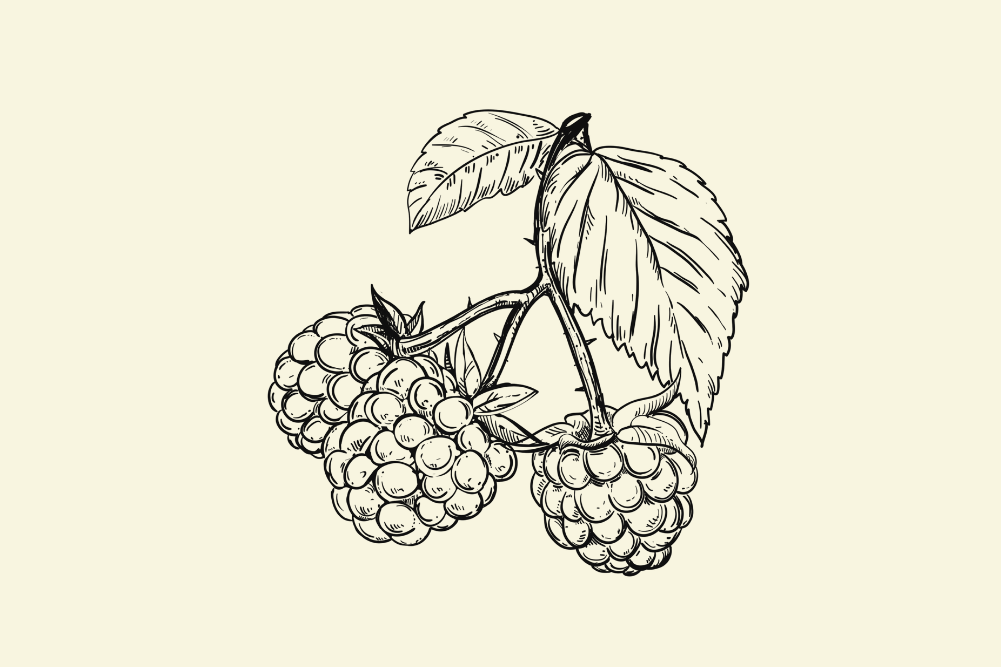How sound therapy can benefit your health
You don’t need a PhD in physics to know the profound effect sound can have on your state of being. Just think of someone running their fingernails down a chalkboard, the high pitch of an alarm, the sound of a beloved’s voice or the beautiful call of a songbird, and how each can impact on your state of being. Sound can invite a broad spectrum of emotions, from sadness to radiant bliss, from wistful romanticism to empowered motivation, from excited frenzy to calm insight.
Equally, you don’t need to be a musician to understand music, also known as the language of the soul. Our experience of music can alter our dynamic natures. The potential of music, and other forms of sound, to heal and support the body and mind and achieve balance and wellness is an interesting phenomenon that we are only just at the edge of truly understanding.
Similarly, the effect of harsh, inharmonious sounds can create physiological reaction and mental and emotional irritation. To even start to understand how sound affects the body and mind, a doctorate in physics and physiology would be a great bonus, as it is very easy to make generalisations and jump to simple conclusions.
Sound & music
Sound is defined as vibrations that move through the atmosphere that can be heard. Sound vibrations are waves moving at particular frequencies that are measured in Hertz. Humans hear vibrations in the acoustic range of between 20 and 20,000 Hz. Beyond 20,000 Hz is the ultrasound range.
Sound occurs when a moving or vibrating object causes the air around it to move, creating sound waves. We hear sound when these waves travel into the ear canal and bounce onto the eardrum to create a vibration picked up by three tiny bones in middle ear, which then passes down to the inner ear.
The inner ear, the cochlea, is filled with liquid that converts the vibrations into electrical impulses, which are then sent to the brain. The brain interprets the impulses as sound via a remarkable synchronicity of neurochemistry within the cerebellum and mesolimbic and frontal lobes, to elicit a wide array of memories, feelings, actions and thoughts.
Music is harmonious sound, or sounds crafted to evoke emotional reactions. Music is often referred to as the universal language.
Einstein & the sacredness of sound
When Einstein defined e=mc2, he showed that energy is the same as matter, just vibrating at different speeds. The “particle-wave theory” furthered this understanding, showing that on the subatomic level things can act interchangeably, either as particles, which have a mass, or as waves, having no mass and being just energy moving as a wave. Physician and natural scientist, Hans Jenny, studied wave phenomenon and identified that the effect of sound vibrations on different materials creates dynamic and ordered patterns.
As confounding at this is to our Western perceptions of reality, these theories indicate that the material world we inhabit and believe to be solid actually comprises highly vibrating, interchanging, minute particles and energy; and, incidentally, a lot of “empty” space. Our world has not adopted this profound intangible version of reality as part of our operational strategy. At this stage of humanity, we are more at home and secure with material reality to base our lives around, but as this unravels, sound may well become an anchor for us to rely on.
Interestingly, modern physicists’ findings parallel theories from the ancient philosophies of Taoism, Buddhism and Hinduism. These include the temporary and changeable nature of reality and the concept that an indivisible holistic reality manifests itself in all things and is part of all things. An alignment exists between physical reality, and sound is represented in sacred geometry. These consistent harmonic patterns and forms found throughout all of nature are aligned with the musical “cycle of fifths”. Sacred geometric shapes have been described as the visual representation of this musical interval.
More esoterically, connections have been made between each of the major chakras (energy centres) of human beings with the notes of the musical scale, suggesting a mechanism for how different notes could affect our hormonal functioning.
The Bible says, “In the beginning was the word, and the Word was with God, and the Word was God” (John 1:1). The Hindus’ Upanishad’s reveal that at the beginning of creation the original vibration was the sound “om”, which is the symbol of the manifestation of God in form. Modern cosmologists would equate this first sound as “the big bang”. Chances are sound may well have been the first manifestation of creation of our universe.
Our universe is a vibrating entity. One would generally consider outer-space to be an expansive and very quiet place. The spacecraft Voyager has sent us back electromagnetic frequencies from outer space, which have been converted to audible sounds. The difference between sound and electromagnetic waves is that sound waves need a medium (like fluid or gas) to travel through, whereas electromagnetic waves do not.
Space, it seems, is actually full of different whirlings and buzzings when we place the waves into a medium to create sound. Different planetary bodies emit different frequencies, which curiously align with the personalities given to the different planets of our solar system; for example Mercury the quicksilver planet of communication has a quick chirping sound, whereas the abundant Jupiter has a majestic church-organ-like tone.
A range of hypotheses exist that suggest a harmonic coherence of interconnectivity in which sound can play a harmonising role, but there are many versions and even conspiracy theories of how exactly this works and affects our wellbeing.
Healing & sound
Sound can support healing by bringing harmony to the body, mind and spirit. Music therapies of various types have been shown to positively affect stress reactions and performance. For example, Baroque music helps to balance the nervous system and enhances learning. Specifically, it enhances the ability to visualise in the mind’s eye and understand the relationships between objects. This has been called “The Mozart effect” and is a wonderful support for children with developmental issues.
The “Five Rhythms” movement meditation practice, as articulated by the late Gabrielle Roth, are flowing, chaos, staccato, lyrical and stillness. When expressed through the body as dance, it can trigger emotional releases of stymied energy or allow the body to move and release its needs, restoring balance. Core to this practice is the understanding that everything is energy and moves in waves, patterns and rhythms.
Musician Avishai Barnatan believes one can use sound and music in a certain way or with clear intention to help people to transform and heal. “Music can open something to help bring more harmony and healing into the world,” he says. Twenty years ago, Barnatan realised the power of the note C sharp and developed a way of combining the different tones of Tibetan bowls, chimes, flutes and singing to create an experiential concert he calls a “soundshower”.
During this hour of audio-cleansing, people experience the sounds to help reduce brain activity and slow the heartbeat and to invite a meditative state where healing can occur, according to Barnatan. The experience is a total body immersion in harmonic sound vibrations, which Barnatan says provokes cells to synchronise with the harmonious tones, relinquish any stagnant energy and tension that has accumulated in the body and enhance a physical, mental and emotional calibration to the human body and energy field.
Barnatan explains this healing effect of using the principle of entrainment, which suggests that when a dominant, steady frequency exists next to a weaker frequency, over time, the weaker frequency will align to the steady, strong one. This can explain why natural frequencies, found in the hum of nature, can be healing to humans, as has been shown in the studies of how “green spaces” affect health and happiness.
Individual sound healing sessions can use vibrating tuning forks to impart harmonic vibrations into specific areas, a kind of sound acupuncture, carrying sound vibration into tissues and bones to help realign subtle frequencies of the emotional body and their relationship to the physical self. There’s a range of hypotheses about this, many more developed than others. Most lack scientific rigour, but are subtle and gentle, and can provide a deep sense of relaxation at the very least, which in itself can be healing.
Singing and finding your voice is a powerful healing experience for many. Singing together in choirs provides great therapeutic experiences for many, not just because of making and receiving harmonious musical vibrations, but also because it creates a collaborative community. Many human cultures have traditions of singing and chanting. The yogic tradition of chanting Sanskrit phrases (called mantras) has become more popular in the West over the past decade. Duo Deva Premal and Miten, who performed at UPLIFT Festival in Byron Bay, sing beautiful repetitions of ancient mantras with the intention of providing spiritual insight and healing.
At the end of life, music can play a powerfully healing role, as explored in the field of “music thanatology”. The term thanatology comes from thanatos, the Greek term for death. Some hospices provide musical supports for the dying and even specially trained musicians provide musical bedside vigils to support the dying person and their friends and family. Harps are a particularly appropriate instrument to provide support during the transition to death.
It’s not only beautiful music that can stimulate healing. One theory suggests that part of the reason cats purr is to support their bone regeneration. Purring is generally at a frequency of 25–150Hz, which is the level found to be stimulating bone regeneration. As cats spend a lot of their time doing the important work of energy conservation (cat-napping) rather than high-density weight-bearing exercise, purring may well be an adaptation to restore bone strength while they rest. Also, cats have significantly fewer bone abnormalities than dogs, which has led to the suggestion that purring may prevent the development of these conditions.
For humans, NASA is using vibrating plates for their off-earth astronauts to sit on for 20–30 minutes a day. These plates, vibrating at 90Hz, seem to combat the osteoporotic effect the lack of gravity imposes on them. In yoga, a humming pranayama (breath practice) called Bhramari, the bee breath, involves blocking off the ear canals with the fingers and making a loud humming sound. This is thought to speed up healing time after operations and also helps mitigate headaches and migraines.
Ultrasound (US) has been used in physical medicine for many years. No one is really clear how US works, though the most accepted theory is that the ultrasound wave imparts a micro-trauma, which elicits a minor inflammatory reaction and boosts the healing and clearing ability of the body. Julie Sheahan, a physiotherapist from Fusion Health, says that despite a lack of scientific evidence validating its effectiveness, many practitioners clinically see good improvements in their patients, particularly when US is used in conjunction with a whole treatment plan.
The power of the word
Words are also sounds. The words we use and the intonation we give them have potentially revolutionary effects on how we feel and heal. As suggested by the founder of the Centre for Non-violent Communication, “when communication supports compassionate giving and receiving, happiness replaces violence and grieving.” The power of the word to provide support and invite feelings of understanding and belonging is potentially revolutionary for human civilisation.
The vibe
According to the physicists, our universe is energy, which prefers harmony. Our cells are vibrations and react to vibrations. Thus sound, whether white noise or a Mozart symphony, is constantly imparting a vibration on your state of being and therefore affecting your level of health and wellbeing.
Vibrational healing methods using music may well be the most direct and effective way to help the body to heal and come back into harmony and Health. We have much to learn and fully understand about the profound power of sound. Music can easily take us to new areas of consciousness, which, at this point on the planet, may be the most healing gift of all.
Sally Mathrick is a practising naturopath and workplace wellness facilitator. Find out more about her at soundmedicine.com.au and sparklewell.com.au.








